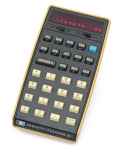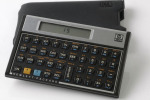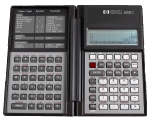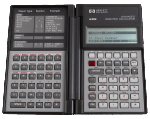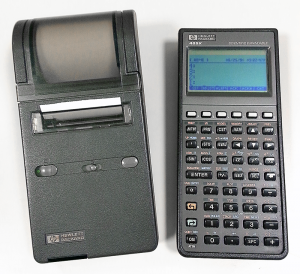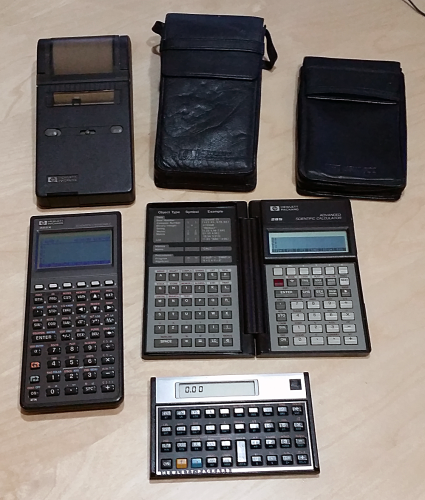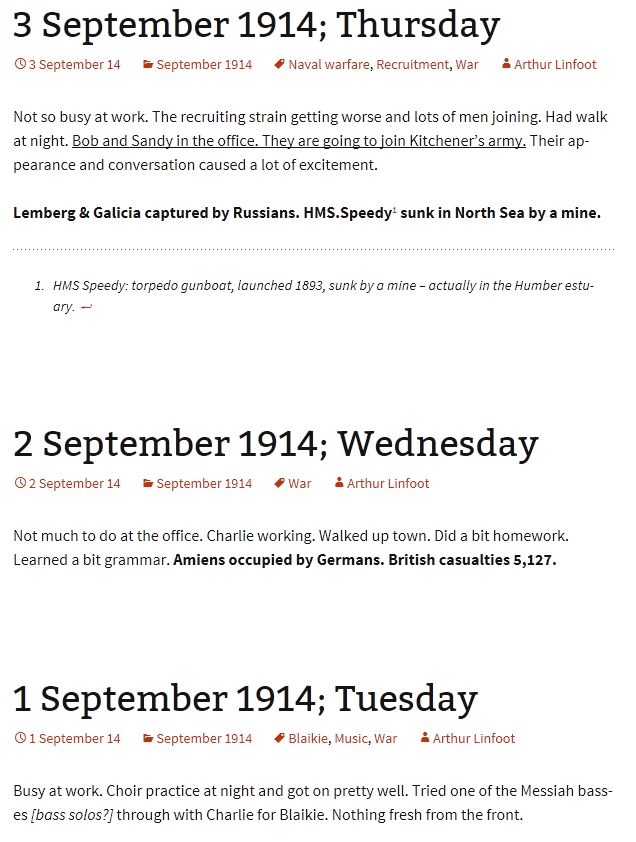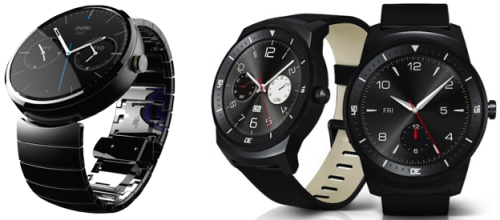I have previously here on my blog mentioned my preference for HP calculators. Our first calculator at home was the HP-21, with a red LED display, which we got in late 1975 (if I remember correctly), soon after it was released. My parents used it for all different kinds of calculations, especially taxes (back then the Swedish tax system was much more complicated than it is today). My cousin who worked at HP (and got us the calculator) explained RPN (Reverse Polish Notation) to me, and it made sense to me to use that system for calculations.
Fast forward to 1983. I was now in 8th grade and we were allowed to use calculators in school. In 7th grade I had learned to use a slide rule (it was already outdated at this time) just to irritate my math teacher, but now I got my very own calculator, the HP-15C. This scientific calculator, often called the best calculator ever made, was programmable with 448 program steps. I wrote all kinds of programs for it, and used it heavily in math and physics classes in school.
In 1987, HP released the graphing calculator HP-28C, with 2kB of memory, a display that could show not only graphs but all four levels of the stack, and a flip-open or “clamshell” case, with two separate keyboard sections. I got one as soon as it came out, as well as an infrared thermo printer (HP82240A). My dad took over my HP-15C, and he kept it until his death in 2001.
A year later HP-28S was released, with 32kB memory and support for directories and custom menus, as well as a few new fucntions like symbolic expressions. So I sold the HP-28C and purchased the newer model, even if I was almost done with high school at this point.
In 1990 HP released the great HP-48SX, with a large graphics display, two expansion ports for memory cards of up to 128kB, a two-way infrared port, a serial port with support for the Kermit file transfer protocol and 32kB build-in user memory. The processor had a clock frequency of 2 MHz and the display had a resolution of 131 x 64 pixel. I got this calculator in April 1990, while I served in the Swedish Air Force. I really had no use for the calculator right then, but I knew that I wanted the latest and greatest in HP handheld calculators. I don’t remember what I did with my HP-28S, I think I may have sold it to an old classmate. I kept the printer, despite the fact that a newer model (HP82240B) had been released. The few changes did not motivate me to spend that extra money.
I have kept my old trusty HP-48SX ever since, for 24 years now. It still works, and in the last 20 years I probably only had to replace the batteries a couple of times.
A few weeks ago I happened to search for HP-28S on eBay, and found that there were several of them for sale there. There were also several HP-28C and HP-48SX, as well as it’s successor HP-48GX (which I never owned). I managed to buy an HP-28S, manuals for it and a leather case just like the one I had. I also picked up a HP82240B printer for $30, I could not resist it at that price…
So now I have all the HP calculators I once owned, except the HP-28C. I also plan to purchase another HP-48SX, as my original calculator have a problem. In order to turn it on or off, I have to press lightly in a specic spot on the case. This well known and common issue is due to a shrunken/dried contact pad between the display and the main curcuit board.
I also purchased a non-working HP-48SX just a few days ago for $22, just so I can open it and see what it looks like inside, before I attempt to repair my own original calculator. Of course I hope that the eBay seller never tried the trick to press in that particular spot, so it may just have the same issue as my calculator. We will see when I get it.
Below is my little collection of HP calculators and printers. In the top row you can see the HP82240B printer to the left and the HP82240A in it’s leather case in the center. To the far right is the leather case for HP-28S.

